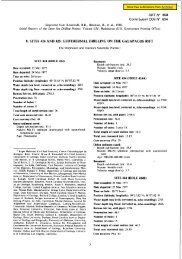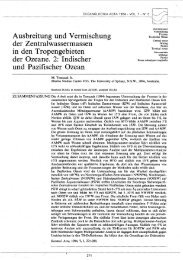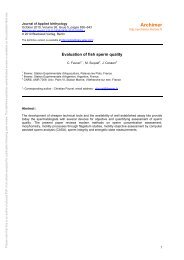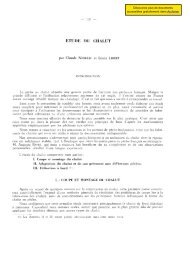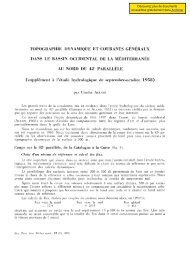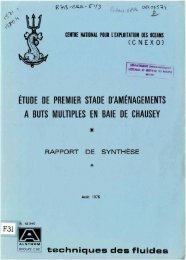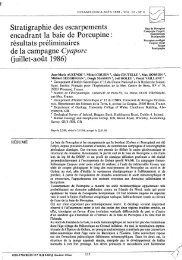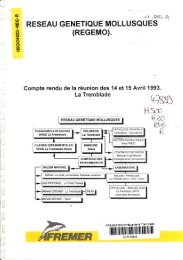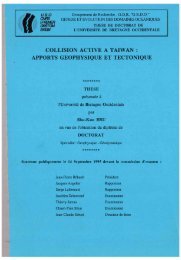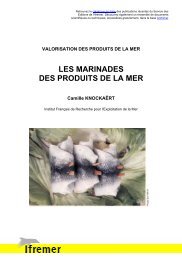Approche quantitative de la fonction de nourricerie jouée par les ...
Approche quantitative de la fonction de nourricerie jouée par les ...
Approche quantitative de la fonction de nourricerie jouée par les ...
Create successful ePaper yourself
Turn your PDF publications into a flip-book with our unique Google optimized e-Paper software.
Chapitre 4 : Impact of vegetation structure dynamics and usage on the nursery function of<br />
West European tidal salt-marshes.<br />
Two other salt marsh colonisation behaviours can also be i<strong>de</strong>ntified. These differ in<br />
terms of the timing of colonisation. Some species such as the European anchovy, Seabass and<br />
Common sole only occur during their first year (young-of-the-year), or acci<strong>de</strong>ntally during<br />
their second year. The nursery function sensu stricto as <strong>de</strong>fined by Beck et al. (2001) applies<br />
to these species. The salt marshes only actively support the young-of-the-year, so that these<br />
species are called Young-of-the-year salt marsh setters. Another <strong>les</strong>s restrictive strategy is that<br />
adopted by the Gol<strong>de</strong>n grey mullet and European sprat. These species occur during the first<br />
few years of their life cycle. This is therefore an exten<strong>de</strong>d form of the nursery function since<br />
several cohorts are maintained by the production produced in situ.<br />
Access to the salt marshes is temporary, because of the ti<strong>de</strong>s. At another temporal<br />
scale (that of the year), the regu<strong>la</strong>rity and/or fi<strong>de</strong>lity of frequenting these productive<br />
ecosystems enab<strong>les</strong> various popu<strong>la</strong>tions of fish to survive. They have <strong>de</strong>veloped various<br />
colonising strategies enabling them to use the food resources of salt marshes and improve<br />
their growth performance and their survival. The trophic role of coastal salt marshes is<br />
therefore fundamental for supporting coastal stocks and in the production of the breeding<br />
stock.<br />
6. Conclusion.<br />
Since European salt marshes are <strong>de</strong>clining in area and number the remaining ones p<strong>la</strong>y<br />
a crucial role in the survival of coastal fish popu<strong>la</strong>tions. This study of the colonisation of the<br />
salt marshes of the Aiguillon bay showed that there has been a change in the distribution of<br />
the young stages of some species of high fisheries value such as the Seabass. Salt marshes are<br />
often managed to maintain popu<strong>la</strong>tions of breeding, passage or wintering birds (Meunier et<br />
Joyeux 2003), or for traditional activities such as elver fishing, but these seem to have<br />
endangered the initial nursery function of these areas (Laffaille et al. 2000b). The invasion of<br />
the initial vegetation structure by couch grass (Elytrigia atherica) also alters this function,<br />
obliging the fish to turn to prey of marine origin instead of terrestrial origin such as Orchestia<br />
gammarellus (Parlier 2002). If these imba<strong>la</strong>nces persist, the whole of the trophic networks in<br />
coastal zones are going to be altered because of adverse changes in recruitment. The whole<br />
outwelling process (Odum 1968b) is also going to be affected, with the fish no longer being<br />
able to p<strong>la</strong>y their role of biotic vector. The un<strong>de</strong>rstanding of colonisation phenomenon of<br />
coastal areas subjected to strong human pressures or biological disturbances through the fish<br />
142



